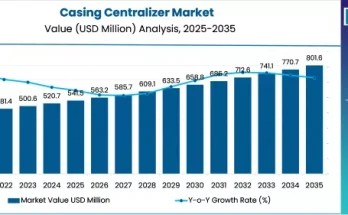Fact.MR’s recent report on the global flexitanks market anticipates a largely positive outlook through 2031, majorly underpinned by rapid uptake of flexible packaging solutions across the food industry. Growth is anticipated to remain gradual yet stable, as certain end-use industries such as chemical manufacturing have experienced contraction due to the coronavirus pandemic.
As per the Association for Packaging and Processing Technologies, flexible packaging comprises nearly a fifth of the global packaging market. Food packaging comprises nearly half of total flexible packaging demand. Consequently, an incline has been witnessed with regard to the manufacturing of food-grade flexitanks in recent years. With North America poised to emerge as the primary flexible plastic food packaging hub, valued at approximately US$ 28 billion and expanding at just over 2%, prominent flexitank manufacturers are directing all their investments here.
Players such as Hillebrand, Techno Group, and Bulk Liquid Transport (BLT) already have a highly robust presence, with BLT emerging as the largest manufacturer. Incorporating raw materials supplied by long-term partners such as Dow Chemical and Exxon Mobil, the company manufactures flexitanks comprising an outer polypropylene layer made from high-tech aramid fiber, with high-strength weft reinforcement every 10 cm. These are suitable for transporting edible oils, concentrated fruit juices, food additives, and sorbitol, among other products.
Key Takeaways from Market Study
- Mitigating contamination risks leading to preference for single trip flexitanks by manufacturers
- By application, food ingredient flexitanks to garner majority share, and wine transportation to receive tailwinds
- The U.S. to post impressive gains, fueled by a flourishing flexible packaging industry
- Fast-paced innovations to cement U.K.’s influence across the global flexitanks market
- Germany and France to experience high growth amid flourishing chemical and wine production
- Surging agricultural output to pivot the Indian market, with China banking on heightened chemicals production for future growth
“Increasing demand for lightweight and flexible transportation solutions with a view to reduce freight costs and travel time is persuading key application industries to opt for flexitanks, prompting enhanced investments in research & development to dole out industry-specific solutions,”comments a Fact.MR analyst.
Competitive Landscape
The global flexitanks market is characterized by the presence of a plethora of manufacturers attempting to widen their footprints by deploying a wide spectrum of expansion strategies. Offering regulatory-compliant environmentally sound packaging solutions, acquisition of smaller scale market players, widening existing product portfolio offerings, and capacity expansion projects are a few of the key strategies being followed by vendors.
For instance, MY FlexiTank offers two product categories: Premier FLEXITANK and Econ FLEXITANK. The Premier FLEXITANK comes with linear low density polyethylene (LLDPE) and ethylene vinyl alcohol (EVOH), which offers an oxygen and moisture barrier and prevents heat permeation during shipment. The latter is suitable for the carriage of all non-hazardous liquids not sensitive to moisture or oxygen.


